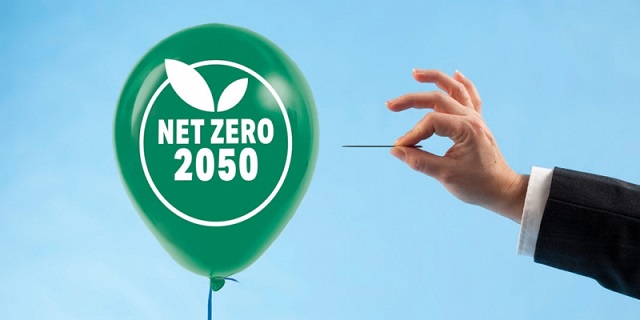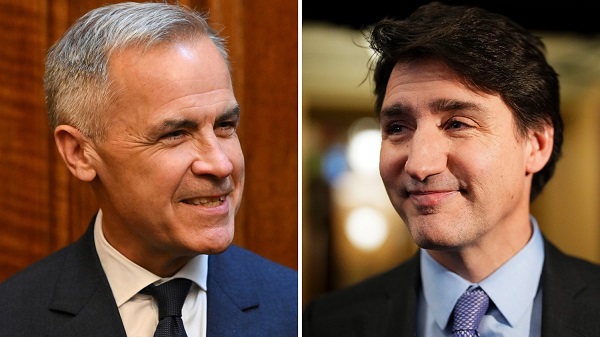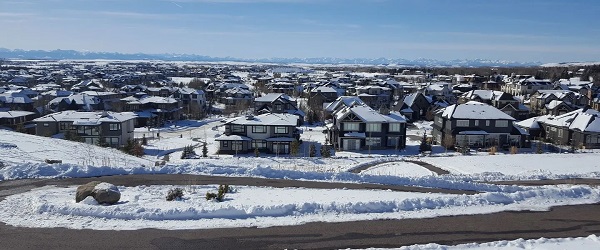Energy
Halfway Between Kyoto and 2050: Zero Carbon Is a Highly Unlikely Outcome

From the Fraser Institute
By Vaclav Smil
The global goal to achieve “net-zero” carbon emissions by 2050 is impractical and unrealistic, finds a new study published today by the Fraser Institute, an independent, non-partisan Canadian public policy think-tank.
“The plan to eliminate fossil fuels and achieve a net-zero economy faces formidable economic, political and practical challenges,” said Vaclav Smil, professor emeritus at the University of Manitoba and author of Halfway Between Kyoto and 2050: Zero Carbon Is a Highly Unlikely Outcome.
Canada is now also committed to this goal. In 2021, the federal government passed legislation mandating that the country will achieve “net-zero” emissions—that is, will either emit no greenhouse gas emissions or offset its emissions through other activities (e.g. tree planting)—by 2050.
Yet, despite international agreements and significant spending and regulations by governments worldwide, global dependence on fossil fuels has steadily increased over the past three decades. By 2023, global fossil fuel consumption was 55 per cent higher than in 1997 (when the Kyoto Protocol was adopted). And the share of fossil fuels in global energy consumption has only slightly decreased, dropping from 86 per cent in 1997 to 82 per cent in 2022 (the latest year of complete production data).
Widespread adoption of electric vehicles—also a key component of Ottawa’s net-zero plan—by 2040 will require more than 40 times more lithium and up to 25 times more cobalt, nickel and graphite worldwide (compared to 2020 levels). There are serious questions about the ability to achieve such increases in mineral and metal production.
Although the eventual cost of global decarbonization cannot be reliably quantified, achieving zero carbon by 2050 would require spending substantially higher than for any previous long-term peacetime commitments. Moreover, high-income countries (including Canada) are also expected to finance new energy infrastructure in low-income economies, further raising their decarbonization burdens.
Finally, achieving net-zero requires extensive and sustained global cooperation among countries—including China and India—that have varied levels of commitment to decarbonization.
“Policymakers must face reality—while ending our reliance on fossil fuels may be a desirable long-term goal, it cannot be accomplished quickly or inexpensively,” said Elmira Aliakbari, director of natural resource studies at the Fraser Institute.

Summary
- This essay evaluates past carbon emission reduction and the feasibility of eliminating fossil fuels to achieve net-zero carbon by 2050.
- Despite international agreements, government spending and regulations, and technological advancements, global fossil fuel consumption surged by 55 percent between 1997 and 2023. And the share of fossil fuels in global energy consumption has only decreased from nearly 86 percent in 1997 to approximately 82 percent in 2022.
- The first global energy transition, from traditional biomass fuels such as wood and charcoal to fossil fuels, started more than two centuries ago and unfolded gradually. That transition remains incomplete, as billions of people still rely on traditional biomass energies for cooking and heating.
- The scale of today’s energy transition requires approximately 700 exajoules of new non-carbon energies by 2050, which needs about 38,000 projects the size of BC’s Site C or 39,000 equivalents of Muskrat Falls.
- Converting energy-intensive processes (e.g., iron smelting, cement, and plastics) to non-fossil alternatives requires solutions not yet available for largescale use.
- The energy transition imposes unprecedented demands for minerals including copper and lithium, which require substantial time to locate and develop mines.
- To achieve net-zero carbon, affluent countries will incur costs of at least 20 percent of their annual GDP.
- While global cooperation is essential to achieve decarbonization by 2050, major emitters such as the United States, China, and Russia have conflicting interests.
- To eliminate carbon emissions by 2050, governments face unprecedented technical, economic and political challenges, making rapid and inexpensive transition impossible.
Author:
Energy
Carney bets on LNG, Alberta doubles down on oil

This article supplied by Troy Media.
Carney is promoting LNG as Canada’s future. Alberta insists the future still runs through oil
Prime Minister Mark Carney is a man in a hurry. He’s fast-tracking energy megaprojects to position Canada as a global LNG powerhouse, but Alberta’s oil ambitions and the private sector’s U.S. focus could throw his plan off course.
It’s all part of a broader federal strategy to reframe Canada’s energy priorities and show that his government is delivering economic results. Some say the motivation is political, with a fragile minority government and the potential for a snap election.
Others say it’s about legacy: Carney wants to be remembered as the prime minister who put Canada back on the global energy map.
That ambition came into sharper focus last week. On Thursday, he announced a second wave of projects being sent to the federal Major Projects Office, a body set up to fast-track infrastructure Ottawa sees as vital to national priorities.
The new list includes the Ksi Lisims liquefied natural gas project and the North Coast Transmission Line in British Columbia, along with a hydroelectric project in Nunavut. It also features nickel, graphite and tungsten mines in Ontario, Quebec and New Brunswick.
Ksi Lisims is the second LNG project Ottawa has submitted to the Major Projects Office.
Carney’s goal is clear, according to Lisa Baiton, president of the Canadian Association of Petroleum Producers. “With Ksi Lisims LNG and the related Prince Rupert Gas Transmission project joining LNG Canada Phase 2 on the major projects list, paired with Cedar and Woodfibre LNG, which are already under construction, Canada is on a path to become one of the top five LNG exporters in the world,” she said in a statement.
But not everyone is on the same page, especially Alberta.
The first batch of fast-tracked projects, announced two months ago, included a Montreal port expansion, a small modular nuclear plant in Ontario, mining projects in Saskatchewan and British Columbia, and LNG Canada Phase 2.
Alberta’s proposed oil export pipeline project was on neither list.
Premier Danielle Smith had said she hoped an agreement with Ottawa would be finalized by early last week to allow a new bitumen pipeline to proceed. That didn’t happen. But in a statement last Wednesday, her office said “sensitive” negotiations are continuing.
“Currently, we are working on a (memorandum of understanding) agreement with the federal government that includes the removal, carveout or overhaul of several damaging laws chasing away private investment in our energy sector, and an agreement to work towards ultimate approval of a bitumen pipeline to Asian markets,” the statement said.
Alberta argues such pipelines are critical if Canada is serious about energy diversification and global exports, particularly to Asia, where demand is rising. So far, those arguments don’t appear to have moved Carney.
With no federal deal in place, the industry is moving ahead with its own export agenda by doubling down on the U.S. market.
Enbridge has approved $1.4 billion in upgrades to its Mainline and Flanagan South pipelines, adding 250,000 barrels per day of capacity to move Canadian crude to the U.S. Midwest and Gulf Coast. The expansion is expected to come online in 2027.
The company also plans to test commercial demand in 2026 for a second phase of Mainline expansion that could add another 250,000 barrels per day.
Colin Gruending, Enbridge’s president of liquids pipelines, said the U.S. remains the most logical export market for Canadian oil, followed by Asia via the West Coast. The federal government’s goal of reducing reliance on U.S. buyers may take time.
Trans Mountain Corp., which moves oil sands crude to the Vancouver area for export, is reportedly also considering ways to increase volumes quickly and affordably.
Keystone XL, the pipeline project killed by former U.S. president Joe Biden in 2021, may also be back in play. The existing Keystone system, now owned by South Bow Corp., moves Canadian oil to U.S. Gulf Coast refineries. The cancelled XL expansion would have added new pipe and a more direct route south.
Whether Carney’s push makes Canada an LNG superpower or hits a wall of regional resistance and market reality, the energy and political maps are shifting.
Toronto-based Rashid Husain Syed is a highly regarded analyst specializing in energy and politics, particularly in the Middle East. In addition to his contributions to local and international newspapers, Rashid frequently lends his expertise as a speaker at global conferences. Organizations such as the Department of Energy in Washington and the International Energy Agency in Paris have sought his insights on global energy matters.
Troy Media empowers Canadian community news outlets by providing independent, insightful analysis and commentary. Our mission is to support local media in helping Canadians stay informed and engaged by delivering reliable content that strengthens community connections and deepens understanding across the country.
Business
Climate Climbdown: Sacrificing the Canadian Economy for Net-Zero Goals Others Are Abandoning

By Gwyn Morgan
Canada has spent the past decade pursuing climate policies that promised environmental transformation but delivered economic decline. Ottawa’s fixation on net-zero targets – first under Justin Trudeau and now under Prime Minister Mark Carney – has meant staggering public expenditures, resource project cancellations and rising energy costs, all while failing to
reduce the country’s dependence on fossil fuels. Now, as key international actors reassess the net-zero doctrine, Canada stands increasingly alone in imposing heavy burdens for negligible gains.
The Trudeau government launched its agenda in 2015 by signing the Paris Climate Agreement aimed at limiting the forecast increase in global average temperature to 1.5°C by the end of the century. It followed the next year with the Pan-Canadian Framework on Clean Growth and Climate Change that imposed more than 50 measures on the economy, key among them a
carbon “pricing” regime – Liberal-speak for taxes on every Canadian citizen and industry. Then came the 2030 Emissions Reduction Plan, committing Canada to cut greenhouse gas emissions to 40 percent below 2005 levels by 2030, and to achieve net-zero by 2050. And then the “On-Farm Climate Action Fund,” the “Green and Inclusive Community Buildings Program” and the “Green Municipal Fund.”
It’s a staggering list of nation-impoverishing subsidies, taxes and restrictions, made worse by regulatory measures that hammered the energy industry. The Trudeau government cancelled the fully-permitted Northern Gateway pipeline, killing more than $1 billion in private investment and stranding hundreds of billions of dollars’ worth of crude oil in the ground. The
Energy East project collapsed after Ottawa declined to challenge Quebec’s political obstruction, cutting off a route that could have supplied Atlantic refineries and European markets. Natural gas developers fared no better: 11 of 12 proposed liquefied natural gas export terminals were abandoned amid federal regulatory delays and policy uncertainty. Only a single LNG project in Kitimat, B.C., survived.
None of this has had the desired effect. Between Trudeau’s election in 2015 and 2023, fossil fuels’ share of Canada’s energy supply actually increased from 75 to 77 percent. As for saving the world, or even making some contribution towards doing so, Canada contributes just 1.5 percent of global GHG emissions. If our emissions went to zero tomorrow, the emissions
growth from China and India would make that up in just a few weeks.
And this green fixation has been massively expensive. Two newly released studies by the Fraser Institute found that Ottawa and the four biggest provinces have either spent or foregone a mind-numbing $158 billion to create just 68,000 “clean” jobs – an eye-watering cost of over $2.3 million per job “created”. At that, the green economy’s share of GDP crept up only 0.3
percentage points.
The rest of the world is waking up to this folly. A decade after the Paris Agreement, over 81 percent of the world’s energy still comes from fossil fuels. Environmental statistician and author Bjorn Lomborg points out that achieving global net-zero by 2050 would require removing the equivalent of the combined emissions of China and the United States in each of the next five
years. “This puts us in the realm of science fiction,” he wrote recently.
In July, the U.S. Department of Energy released a major assessment assembled by a team of highly credible climate scientists which asserted that “CO 2 -induced warming appears to be less damaging economically than commonly believed,” and that aggressive mitigation policies might be “more detrimental than beneficial.” The report found no evidence of rising frequency or severity of hurricanes, floods, droughts or tornadoes in U.S. historical data, while noting that U.S. emissions reductions would have “undetectably small impacts” on global temperatures in any case.
U.S. Energy Secretary Chris Wright welcomed the findings, noting that improving living standards depends on reliable, affordable energy. The same day, the Environmental Protection Agency proposed rescinding the 2009 “endangerment finding” that had designated CO₂ and other GHGs as “pollutants.” It had led to sweeping restrictions on oil and gas development and fuelled policies that the current administration estimates cost the U.S. economy at least US$1 trillion in lost growth.
Even long-time climate alarmists are backtracking. Ted Nordhaus, a prominent American critic, recently acknowledged that the dire global warming scenarios used by the Intergovernmental Panel on Climate Change rely on implausible combinations of rapid population growth, strong economic expansion and stagnant technology. Economic growth typically reduces population increases and accelerates technological improvement, he pointed out, meaning emissions trends will likely be lower than predicted. Even Bill Gates has tempered his outlook, writing that climate change will not be “cataclysmic,” and that although it will hurt the poor, “it will not be the only or even the biggest threat to their lives and welfare.” Poverty and disease pose far greater threats and resources, he wrote, should be focused where they can do the most good now.
Yet Ottawa remains unmoved. Prime Minister Carney’s latest budget raises industrial carbon taxes to as much as $170 per tonne by 2030, increasing the competitive disadvantage of Canadian industries in a time of weak productivity and declining investment. These taxes will not measurably alter global emissions, but they will deepen Canada’s economic malaise and
push production – and emissions – toward jurisdictions with more lax standards. As others retreat from net-zero delusions, Canada moves further offside global energy policy trends – extending our country’s sad decline.
The original, full-length version of this article was recently published in C2C Journal.
Gwyn Morgan is a retired business leader who has been a director of five global corporations.
-

 Alberta2 days ago
Alberta2 days agoCalgary mayor should retain ‘blanket rezoning’ for sake of Calgarian families
-

 Bruce Dowbiggin2 days ago
Bruce Dowbiggin2 days agoSports 50/50 Draws: Make Sure You Read The Small Print
-

 Alberta2 days ago
Alberta2 days agoAlberta Offers Enormous Advantages for AI Data Centres
-

 espionage2 days ago
espionage2 days agoTrump says release the Epstein files
-

 COVID-192 days ago
COVID-192 days agoNew report warns Ottawa’s ‘nudge’ unit erodes democracy and public trust
-

 Censorship Industrial Complex2 days ago
Censorship Industrial Complex2 days agoQuebec City faces lawsuit after cancelling Christian event over “controversial” artist
-

 Alberta2 days ago
Alberta2 days agoNational Crisis Approaching Due To The Carney Government’s Centrally Planned Green Economy
-

 Alberta1 day ago
Alberta1 day agoSylvan Lake football coach fired for opposing transgender ideology elected to town council











